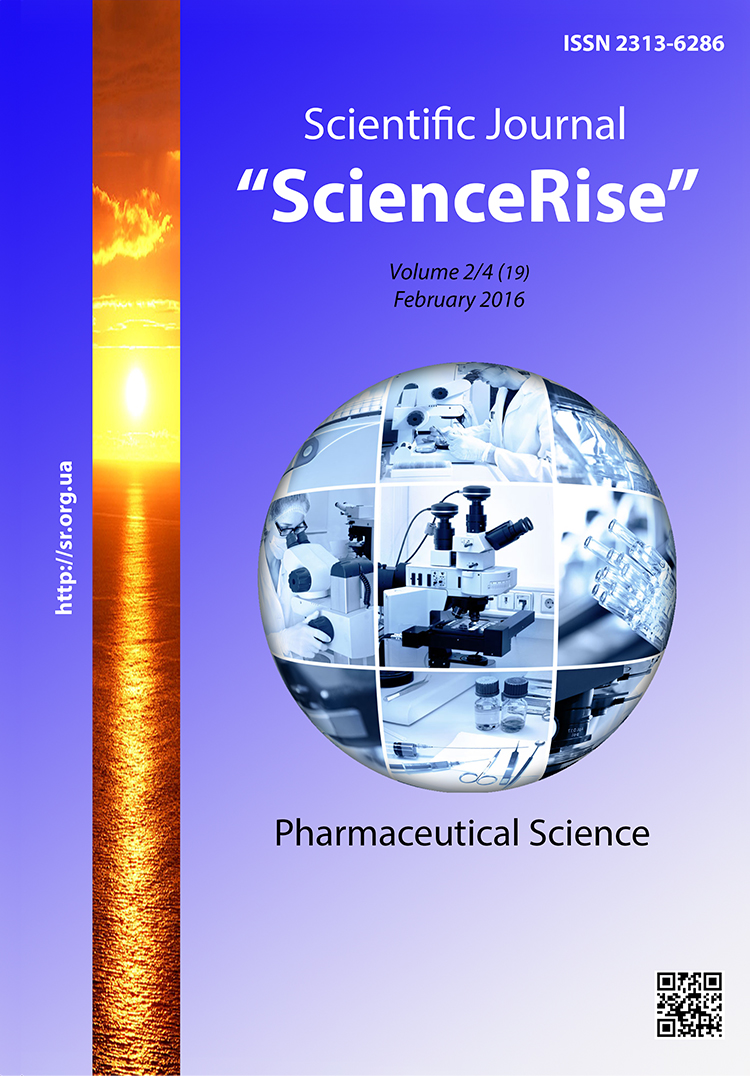Contemporary challenges of pharmaceutical compounding in southern nigeria: results of survey
DOI:
https://doi.org/10.15587/2313-8416.2016.62439Ключевые слова:
compounded preparations, hospital pharmacy, questionnaire, standard operating procedure, national formulary, stabilityАннотация
In the past decade the pharmacy practice worldwide has witness a trend shift from product-orientation to patient-orientation. This and other reasons encouraged the Nigerian government and its institutions to systematically de-emphasized through its budget, funding for the development of compounding unit.
Aim: The aim of given article was to examine the challenges facing compounding pharmacists in hospital pharmacies, cost estimating of extemporaneous preparations and searching of solutions.
Methods: A closed and open-ended format questionnaire was distributed to 50 compounding pharmacists in Rivers State of Nigeria. The questionnaire comprised of a cover letter and 10 items which cut across personnel training, staffing, premise and equipment, logistics, cost of compounding, national reference standards on compounding, in-pharmacy control.
Results: From the survey results, challenges of compounding pharmacies in southern Nigeria such as inadequate manpower, absence of electronic documentation, facilities and funding; lack of national formulary on extemporaneous formulations and locally conducted stability tests were revealed. Cost of extemporaneous preparations ranged from 1–15 US dollars.
Conclusions: Development and implementation of easily accessible national formulary on extemporaneous formulations and their stability study, development of standard operating procedures for all activities in the pharmacy and staff training on recent technologies in compounding preparations are recommended
Библиографические ссылки
Martin, S. (2011). Hospital Pharmacy. UK: Pharmaceutical Press, 140–141.
Karin, W., Summers, R. S., Mackie, C. A., Gous, A. G. S., Everard, M. (2006). Developing pharmacy practice – a focus on patient care. World Health Organization and International Pharmaceutical Federation, 9–12.
Okhamafe, A. O.; Akubue, P. I., Fred, B. A. (Eds.) (2001). A review of B.Pharm degree pharmaceutics and pharmaceutical technology curriculum component. Nigeria, 56–63.
Pharmaceutical Compounding – Nonsterile Preparations <795> (2014). – Revision bulletin, 1–7. Available at: http://www.usp.org/sites/default/files/usp_pdf/EN/gc795.pdf
General notices part II- Unlicensed medicines. British Pharmacopoeia (2013). London: The Stationary Office.
Martha, E., Marian, R. (Eds.) (2012). Managing Access to Medicines and Health Technologies. Arlington, VA: Management Sciences for Health, 29–178.
Aldo, M. (2008). Compounding in Argentina. International Journal of Pharmaceutical Compounding, 12 (2), 104.
Marisol, L. (2008). Compounding in Puerto Rico. International Journal of Pharmaceutical Compounding, 12 (2), 110–111.
Diego, M. (2008). Compounding in Spain. International Journal of Pharmaceutical Compounding, 12 (2), 112–113.
Drug price list (2013). National Health Insurance Scheme. Abuja, 2–32.
Fink, J. F. (1969). Student Sketches. Journal of the American Pharmaceutical Association (1961), 9 (3), 140. doi: 10.1016/s0003-0465(15)31817-6
Zdoryk, O. A. (2014). Organization of the quality assurance system of compounding pharmacies in Ukraine: results of the survey. News of Pharmacy, 4 (80), 64–67.
FIP Global Pharmacy Workforce Report (2012). Available at: http://www.fip.org/files/members/library/FIP_workforce_Report_2012.pdf
Ojo, L. (2014). A closer look at the new national drug distribution guidelines. Pharmanews. Available at: http://www.pharmanewsonline.com/a-closer-look-at-the-new-national-drug-distribution-guidelines/
Nigerian government to enforce drug distribution guidelines from July 1 (2015). Health news. Available at: http://healthnewsng.com/nigerian-government-to-enforce-drug-distribution-guidelines-from-july-1/
Operational guidelines (2012). National Health Insurance Scheme. Abuja, 58–60.
Kastango, E. S., Douglass, K. (2001). Quality assurance for sterile products. Int. J. Pharm. Compd., 5 (4), 246–253.
Pharmacy Compounding Manual (2008). Calgary Health Region Pharmacy, 204.
Pharmaceutical Division Service (2011). Ministry of Health Extemporaneous formulary. Malaysia, 1–57.
Evans, A., Haile, M., Anderson, K. (2010). Development of a standardized intranet database of formulation records for nonsterile compounding, part 1. Int. J. Pharm. Compd., 14 (5), 401–405.
Ministério da Saúde. Decreto-Lei n. º 95/2004, de 22 de Abril, Artigo 1º (2004). Diário da República, I Série-A 95, 2440.
CETMED. Formulário Galénico Português (2005). Lisboa: Associação Nacional das Farmácias.
European cooperation and synergy in quality standards beyond the European pharmacopoeia (2007). National experiences of formularies. EDQM Symposium Strasbourg, France.
Expert Advisory Group ULM 14 (2014). British Pharmacopoeia Commission: Unlicensed Medicines. London. Available at: https://www.pharmacopoeia.com/file/ULM---November-2014.pdf
Загрузки
Опубликован
Выпуск
Раздел
Лицензия
Copyright (c) 2016 Deghinmotei Alfred-Ugbenbo, Oleksandr Zdoryk, Viktoria Georgiyants

Это произведение доступно по лицензии Creative Commons «Attribution» («Атрибуция») 4.0 Всемирная.
Наше издание использует положения об авторских правах Creative Commons CC BY для журналов открытого доступа.
Авторы, которые публикуются в этом журнале, соглашаются со следующими условиями:
1. Авторы оставляют за собой право на авторство своей работы и передают журналу право первой публикации этой работы на условиях лицензии Creative Commons CC BY, которая позволяет другим лицам свободно распространять опубликованную работу с обязательной ссылкой на авторов оригинальной работы и первую публикацию работы в этом журнале.
2. Авторы имеют право заключать самостоятельные дополнительные соглашения, которые касаются неэксклюзивного распространения работы в том виде, в котором она была опубликована этим журналом (например, размещать работу в электронном хранилище учреждения или публиковать в составе монографии), при условии сохранения ссылки на первую публикацию работы в этом журнале .

